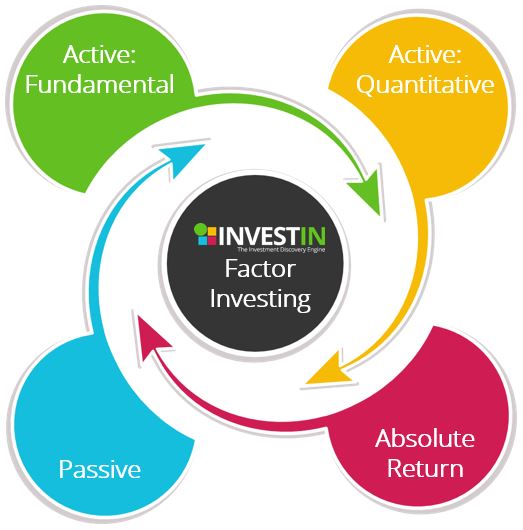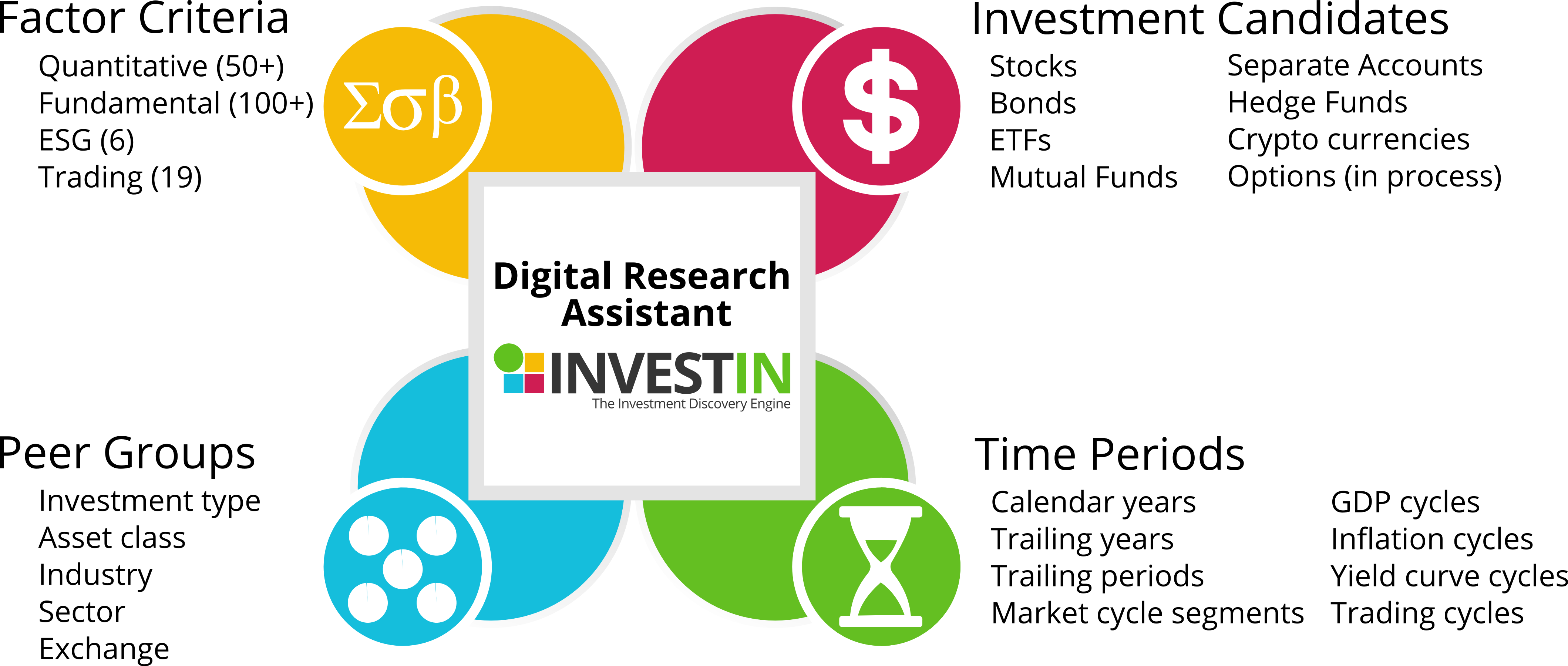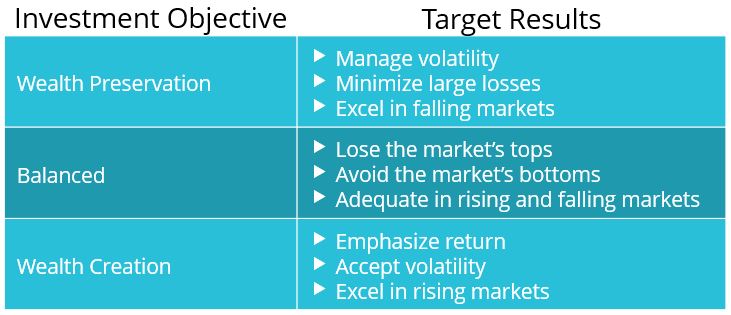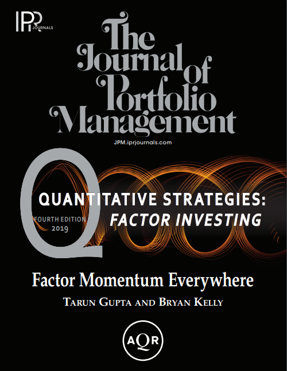Factor Investing Bridges
Passive and Active
Is Factor Investing for You?
What’s a factor in the simplest terms? Factors describe those features determining how an investment performs. Factors for risk; factors for return; factors for risk and return.
Factors emphasize results. Isn’t this true about you?
Labels. Style Boxes. Branding. Popularity. Cachet. These are irrelevant compared to getting results. Passive investing seeks a market’s return at low cost whereas active investing strives for outperformance. Factor investing does both.
Factor investing is rational, quantitative, and efficient like passive but identifies tilts persistent in achieving a targeted result like active.
InvestIn produces all the necessary factor investing components enabling both institutional and private wealth advisors to build customized portfolios tightly fitting investment objectives while targeting desired results.
No Compromises. What You Need.

Factor investing sits at the center of tried and true investment strategies.
Whether a portfolio manager or a wealth advisor, InvestIn produces customized portfolios using the best of each approach but at low cost and with exclusivity.
Any of InvestIn’s 270+ factors can be used to find investments persistent in excelling in a factor. Pick, say, ten of the best of these, save them as a sleeve, and you have a customized, pure-play factor theme. (Or, you can use any of InvestIn’s pre-packaged IntelliSleeves for a quick, one-step approach.)
Mix a variety of risk/return, financial, and/or ESG factors along with different investment types such as stocks, bonds, and hedge funds. You have built a multi-factor model unlike anything else in the market.
Your mix of themes flows through to portfolio building even to a sleeve of sleeves that can be optimized to any investment objective of your design.
These investments and portfolio designs are 100% proprietary to the advisory firm.
Mainstream.
“The other main application is the use of factor products to express a more tactical view . . . Factors can be used to alter risk exposures at an overall portfolio level or to target exposures to certain investment themes . . . there are constituencies which see factor investing as a way to efficiently express particular types of views, themes, or exposures [including] ESG requirements.”
“An interesting aspect of factor momentum is its stability with respect to the definition of recent performance. Whether the look-back window is as short as one month or as long as five years, . . . large positive momentum [exists] among factors . . . factor momentum is a truly global phenomenon . . . support[ing] the conclusion that factor momentum is a pervasive phenomenon in financial markets.”


“With factor investing, I decide which factors are important to my clients and I do the research looking for funds where those factors are most robust. It’s more technical than just picking active managers.”
“To understand factor investing, you have to understand that factors are the source of returns whether you know it or not”
“This is the next silver bullet in portfolio construction . . .We believe factors can be a great part of the tool kit and can help advisers to continue to build better portfolios.”

“A fundamental stock picker might be wary of a quant team simply telling her a stock is a “buy.” But if the quant team can identify screening techniques that produce significantly better returns, the stock picker is more likely to become a believer, Bochman said. That same feedback loop can be applied to other parts of the process, including due diligence, investment committees, reviews, portfolio construction and so on.”
“Quantitative analysis, on the other hand, uses mathematical and statistical modeling that pulls in a sometimes-dizzying array of inputs to screen investment ideas . . . quantamental investing reflects advances on the quantitative front.”
Your Factor Investing Toolkit.

Do you want traditional Smart Beta using factor bundles such as momentum, value, growth, size, quality, or volatility? InvestIn allows you to build your own customized versions at a low cost.
Why not use quantitative risk/return/risk-adjusted factors aligning with an investment objective (see below) or a go-forward sentiment? InvestIn channels expected results directly into investment discovery and selection.
How about using fundamental financial factors or ESG to discover individual securities fitting a client’s needs or aspirations?
Or a mixture of all the above? InvestIn propels your portfolio building exactly the way you want it.
Pick from a results table ordered from “best” to “worst”. Top-ranked Investments in the results table can be selected for a quick portfolio with fully featured portfolio analysis. And, you can mix investment types or simply focus on one.
Allocate these selections based on your preference: equal weighted, custom weights, or the industry’s most advanced optimization (using InvestIn’s exclusive multi-factor, multi-period, and learning genetic algorithm optimizing either to the holdings or the portfolio).
How about true stress testing? InvestIn gives an unprecedented method to evaluate factor models using any packaged or custom time periods (called in-sample) and evaluating these models in a “walking forward” time period (called out-of-sample in which the forward period is treated as though it’s happening in real-time).
Do you like how this portfolio satisfies the design objectives? Save it as a model or a sleeve. A sleeve becomes a single investment itself, fully integrated into InvestIn’s 50,000+ investment database with risk, return, and ranking analytics. (Sleeves become discoverable in future searches alongside all other investment types.)
- InvestIn's Factor Inventory
- Quantitative Factors
- Fundamental Financials
- Environmental; Social; Governance (ESG)
Click a tab to view each category’s factors
- Active Premium
- Alpha
- Annualized CAGR
- Annualized Return
- Annualized SD
- Average Gain
- Average Loss
- Average Rank
- Average Return
- Beta
- Calmar Ratio
- Correlation Coefficient
- Down Capture
- Down Number Ratio
- Down Percentage Ratio
- Downside Deviation
- Expected Tail Return 95%
- Expected Tail Return 99%
- Expected Tail Risk 95%
- Expected Tail Risk 99%
- Fat Tailed VaR 95%
- Fat Tailed VaR 99%
- Gain To Loss Ratio
- Information Ratio
- Jensen Alpha
- Kurtosis
- Max Drawdown
- Modified VaR 95%
- Modified VaR 99%
- Percent Gain
- Potential Gain 5%
- Profit To Loss Ratio
- Rachev Ratio
- R-Squared
- Semi Deviation
- Sharpe Ratio
- Skewness
- Sortino Ratio
- Standard Deviation
- Standard Error
- STARR Ratio
- Sterling Ratio
- Tracking Error
- Treynor Ratio
- T-Stat
- Up Capture
- Up Number Ratio
- Up Percentage Ratio
- VaR 95%
- VaR 99%
- Altman Z-score
- Cashflow Margin
- Cash Per Employee
- Cash Return On Invested Capital
- Cashflow Growth
- Current Debt/Equity
- Current Ratio
- Debt/Equity
- Dividend Yield
- EBIT Margin
- EBIT Yield
- EBITDA to Enterprise Value
- Enterprise Value
- Enterprise Value Change
- Enterprise Yield
- EPS Growth
- EPS Surprise Percent
- Float Ratio
- Free Cashflow
- Free Cashflow Growth
- Free Cashflow to equity
- Free Cashflow to Sales
- Free Cashflow to Equity Yield
- Free Cashflow Yield
- Greenblatt Magic Formula
- Greenblatt Return on Invested Capital
- Gross Profit
- Gross Profit Margin
- Gross Profit to Total Assets
- Gross Profit Yield
- High Price/Book
- High Price/Earnings to Growth Ratio
- High Price/Equity
- High Price/Sales
- Insider Percent
- Institution Percent
- Interest Coverage Ratio
- Long Term Debt/Equity
- Low Price/Earnings to Growth Ratio
- Low Price/Book
- Low Price/Equity
- Low Price/Sales
- Market Cap
- Net Cash Value Per Share
- Net Current Asset Value Per Share
- Net Fixed assets
- Net Income
- Net Profit Margin
- Net Profit Per Employee
- Net Profit Yield
- Net To Operating Profit
- Net-Net Working Capital Per Share
- Operating Income Growth
- Operating income Yield
- Operating Margin
- Operating To Gross Profit
- Piotroski Score
- Price to Net Cash Value
- Price to Net Current Asset Value
- Price to Net-Net Working Capital
- Return on Assets
- Return on Equity
- Return on Invested Capital
- Revenue Growth
- Revenue Per Employee
- Revenue to Enterprise Value
- Short Ratio
- Short Term Cash Power
- Total Cash
- Total Debt Cash Coverage
- Total Debts/Total Assets
- ESG – Corporate Governance
- ESG – Environmental
- ESG – Social
- ESG Controversies Score
- ESG Score
Planning and Execution Aligned.
A competent wealth plan is developed through conversations, insights, intelligence, and expertise. The plan is set and ready to go. Now, it’s time to execute the plan through investment selection and portfolio design.
Far too often, this is where compromises are made, inefficiencies are realized, and failed expectations arise.
Why? The investment plan strayed from the wealth plan’s objective.
Whether an institution or a private wealth advisor, every portfolio includes two objectives: Wealth Preservation and Wealth Creation.

Factor investing aligns specific investments to this objective continuum but targeting a desired result.

Unlike factor-investing ETFs and mutual funds collected around a small number of factors – momentum; growth; value; size; low volatility – InvestIn’s extensive risk/return/risk-adjusted factors connect portfolio building directly to a portfolio’s objective.

With the investments selected, InvestIn offers the most advanced portfolio optimization in the market. Objective targets, go-forward sentiment, min/max constraints, and multiple time periods are optimized together using InvestIn’s proprietary learning genetic algorithm. This optimization performs at either the holdings level using a single time horizon or the portfolio level using multiple time periods (a major technical invention).
Transparency. Low Cost Investing.

Like packaged products such as mutual funds, ETFs, and hedge funds, factor-based themes can be constructed with individual securities. But, instead of fund or ETF shares, the custody account for a factor-based portfolio holds the underlying equity shares and bonds (fixed income).
Now, with $0 trading, individual stock portfolios fit into the fee-only advisor model.
InvestIn, as the premier digital research assistant, handles the investment discovery process based on the factor criteria you want. With ranked choices in the results table including individual securities , a portfolio easily assembles into a one-to-one separately managed account or model.
In this version, each investment is visible in the portfolio and there are no hidden fees or excess costs.
Either solely individual securities or mixed with packaged products according to the same factor criteria, the portfolio’s internal investing costs are efficient.


